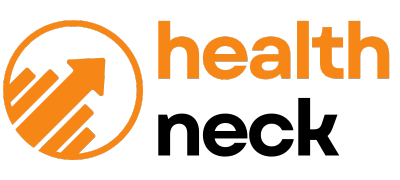Active Lifestyle: How Many Steps Define It and What It Looks Like in Practice
Understanding an Active Lifestyle: Daily Step Count and Beyond
Pursuing an active lifestyle offers significant health benefits, but many people wonder: how many steps per day are needed to qualify as ‘active’, and what does a truly active lifestyle look and feel like? This guide provides clear, actionable answers based on leading health research and expert recommendations, along with practical strategies for implementation.
How Many Steps Per Day Define an Active Lifestyle?
Health experts generally agree that 10,000 steps per day is a widely accepted benchmark for an active lifestyle among adults. Research from multiple studies indicates that:
- Below 5,000 steps per day is considered sedentary or inactive.
- 5,000-7,499 steps is low active .
- 7,500-9,999 steps is somewhat active .
- 10,000-12,499 steps is active .
- Over 12,500 steps is highly active or very active .
These guidelines are supported by several reputable sources, including Medical News Today, which recommends that most adults aim for 8,000-10,000 steps daily for general health and fitness. Those seeking weight loss, greater cardiovascular health, or improved muscle strength may benefit from higher targets or increased walking intensity [1] , [2] , [3] .
What Does an Active Lifestyle Look Like?
An active lifestyle is not solely defined by step count. It encompasses the consistent integration of physical movement into your daily routine, often including:
- Walking, jogging, or cycling as transportation or leisure
- Taking the stairs instead of elevators
- Performing household chores energetically
- Engaging in recreational sports, swimming, or group fitness
- Standing and moving frequently during the workday
This approach emphasizes variety and sustainability. For example, while a person may sometimes reach 8,000 steps through brisk walking, on other days they may achieve a similar activity level by combining walking with cycling or yard work. Experts acknowledge that activities like swimming and cycling do not register as steps but are equally valuable for overall health [4] .
Key Benefits of Meeting Active Step Targets
Regularly achieving an active step count is associated with a range of proven health benefits, including:
- Reduced risk of chronic diseases: Consistent activity lowers the risk of heart disease, diabetes, and obesity. Studies show that even increasing your average step count from 4,000 to 8,000 steps per day can cut the risk of dying from all causes by half [5] .
- Improved mood and mental health: Physical activity releases endorphins, which can alleviate depression and anxiety [3] .
- Weight management: Walking 7,500-10,000 steps a day can help burn 250-600 calories, aiding in weight control and fat loss [3] .
- Enhanced mobility and flexibility: Regular motion improves joint health, muscle strength, balance, and overall physical function [1] .
How to Gradually Achieve an Active Step Count
If you currently fall below the active threshold, incremental changes are both effective and sustainable. Follow these steps to increase your daily movement:
- Assess your current baseline. Use a pedometer, smartphone, or wearable device to track your average steps for a week.
- Set realistic, progressive goals. If you average 4,000 steps, commit to increasing by 500-1,000 steps per day each week until you reach your target.
- Integrate movement throughout your day. Park farther away, take walking meetings, or add a short stroll after meals.
- Mix in other activities. Supplement walking with cycling, swimming, or fitness classes-even if they don’t count as steps, they contribute to your overall activity.
- Monitor your progress. Regularly review your step data and celebrate milestones.
- Seek support. Form walking groups or involve family and friends for motivation.
- Consult your healthcare provider. Always check with a professional before making significant changes, especially if you have pre-existing conditions.
Real-World Example: Building Up to 10,000 Steps
Consider the case of a 45-year-old office worker who averaged 4,200 steps per day. By intentionally adding a 20-minute walk at lunch (about 2,000 steps) and taking the stairs instead of the elevator (another 800 steps), they gradually increased to 7,000 steps within three weeks. By incorporating weekend hikes and participating in a recreational soccer league, they surpassed 10,000 steps on several days each week. Over three months, this routine led to noticeable improvements in energy, sleep quality, and mood.
Potential Challenges and Solutions
Time Constraints: Many adults cite lack of time as a barrier. Address this by dividing activity into shorter bouts-three 10-minute walks can be as effective as one 30-minute session.

Source: grammar.cl
Motivation Fluctuates: Plateaus or lapses are common. Use reminders, set achievable mini-goals, or find an accountability partner to sustain motivation.

Source: vectorstock.com
Physical Limitations: Those with mobility issues can adapt by focusing on lower-impact activities, chair exercises, or water aerobics. Consult a doctor or physical therapist for safe options.
Alternative Approaches for an Active Lifestyle
While step tracking is a useful measure, it’s not the only indicator of activity. The Centers for Disease Control and Prevention recommend at least 150 minutes of moderate-intensity aerobic activity per week, such as brisk walking, swimming, or cycling. For those who cannot walk extensively, alternatives like stationary biking, adaptive sports, or group fitness classes can provide similar health benefits. Always tailor your approach to your preferences and physical abilities.
How to Access Resources for Physical Activity
Numerous community resources may help you stay active. Local parks and recreation departments often offer free or low-cost walking clubs, fitness classes, and activity challenges. To find programs in your area, use these strategies:
- Search for “community walking programs” or “recreation center fitness classes” with your city or county name.
- Contact your local YMCA or wellness center for schedules and fees.
- Ask your primary care provider about referrals to physical activity programs, especially if you have specific health needs.
- For those with Medicare, check if your plan includes fitness benefits or partnerships with wellness facilities.
Summary and Next Steps
An active lifestyle is within reach for most adults by aiming for at least 8,000-10,000 steps per day and consistently integrating movement into daily life. Use step-tracking tools, set incremental goals, and explore diverse activities to keep your routine engaging. If you have questions about safe exercise levels or need additional support, consult your healthcare provider or local wellness organizations. Building an active lifestyle is a journey, and every step counts toward better health.
References
- [1] Medical News Today (2024). How many steps should people take per day?
- [2] Healthline (2023). How Many Steps a Day: Weight Loss, Fitness Level, Tips for More Steps
- [3] MedicineNet (2021). How Many Steps a Day Is Considered Active?
- [4] PubMed Central (2011). How many steps/day are enough? for adults
- [5] UCLA Health (2025). How many steps do you need a day to see health benefits?



